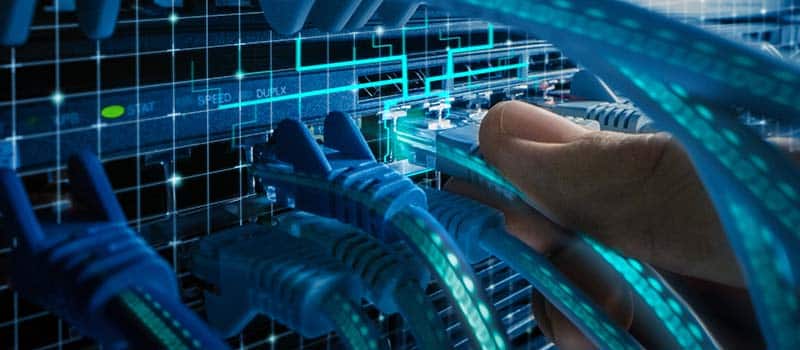In any network environment, the DHCP server plays a critical role in ensuring devices can connect to the internet and communicate seamlessly. If it experiences an error, your operations can grind to a halt – costing you money, productivity, and customer trust. Fortunately, it is possible to troubleshoot this issue by following some basic steps.
But what is a DHCP server? And what does a “can’t reach DHCP server” error mean?
What is a DHCP Server?
A DHCP server, short for Dynamic Host Configuration Protocol, automatically assigns IP addresses to devices on a network. Without it, devices would require manual IP configuration—a time-consuming and error-prone process, especially in environments with multiple connected devices.
By automating the assignment of IP addresses, a DHCP server ensures:
- Efficient device connectivity.
- Avoidance of IP conflicts.
- Smooth communication within the network.
When a device reports that it can’t reach the DHCP server, it means it is unable to obtain an IP address. This results in limited or no connectivity.
Common Causes of DHCP Errors
A DHCP error can stem from various sources, including:
- Physical Connection Issues: Faulty cables, disconnected devices, or malfunctioning network hardware.
- Configuration Errors: Misconfigured DHCP settings on the server or router.
- Network Adapter Issues: Problems with a device’s network interface card (NIC) or its drivers.
- DHCP Server Downtime: The server itself is offline or overloaded.
How to Fix DHCP Server Errors
If you are unable to connect to your network, follow these steps to troubleshoot and resolve the problem:
1. Check Physical Connections
The first step is to ensure all hardware is functioning correctly:
- Verify that your router and modem are powered on and properly connected.
- Inspect Ethernet cables for damage or loose connections.
- Check indicator lights on network devices to confirm they are active.
If the physical setup appears fine, restart the router and modem to refresh the connection. A simple restart will solve many IT issues, including some that initially appear to be DHCP errors.
2. Restart the Affected Device
Sometimes, the issue lies with the device trying to connect to the network:
- Restart the device to refresh its network settings.
- If the device is using Wi-Fi, disconnect and reconnect to the network.
This often resolves temporary glitches in the network configuration.
3. Verify DHCP Server Settings
DHCP errors are often caused by misconfigured settings. Verify that:
- The server is running. Check for the server using the net start command. If it is active, it should be visible.
- The server is authorized.
- IP address leases are available. Use the management console to check this.
- The server binds to at least one valid IP address. To do this, run the Get-DhcpServerv4Binding or Get-DhcpServerv6Binding cmdlet.
- The server is the only process using UDP ports 67 and 68. Run netstat -anb to do this.
- Check configured DHCP policies and filters.
- Check for BAD_ADDRESS listings.
- Check whether any devices on the network have static IP addresses, as these can cause conflicts.
4. Update or Reinstall Network Drivers
Outdated or corrupted network adapter drivers can prevent devices from communicating with the DHCP server. On Windows:
- Open Device Manager.
- Expand “Network Adapters” and right-click your adapter.
- Select “Update driver” and follow the prompts.
5. Check for DHCP Server Availability
If the problem persists, the issue may lie with the DHCP server itself. Contact your network administrator or internet service provider (ISP) to confirm whether the server is operational.
When to Call in Professional Help
If none of the above steps resolve the issue, it may be time to consult an IT professional. An experienced technician can perform more advanced diagnostics and ensure that your network infrastructure is properly configured.
Proactive Tips to Avoid DHCP Errors
To prevent future DHCP issues:
- Regularly update your router’s firmware to address potential bugs.
- Perform routine checks on network hardware and connections.
- Ensure proper DHCP server configuration and regularly review settings.
- Maintain backups of your network configuration for quick recovery.
Do you regularly experience IT issues? Learn how to perform a health check-up
Solve Common Errors With Expert Support
Encountering a DHCP error can disrupt workflows and halt operations – but the damage can be mitigated with swift action. By learning how to fix DHCP server errors, you can quickly restore connectivity and ensure smooth network performance.
If you’re experiencing IT issues such as a DHCP error, ION247 can help. Whether you’re an SMB or a large enterprise, our expert support specialists are equipped to handle any challenge that might disrupt your productivity. Find out more about how we can assist you.

